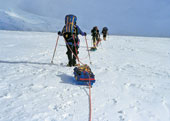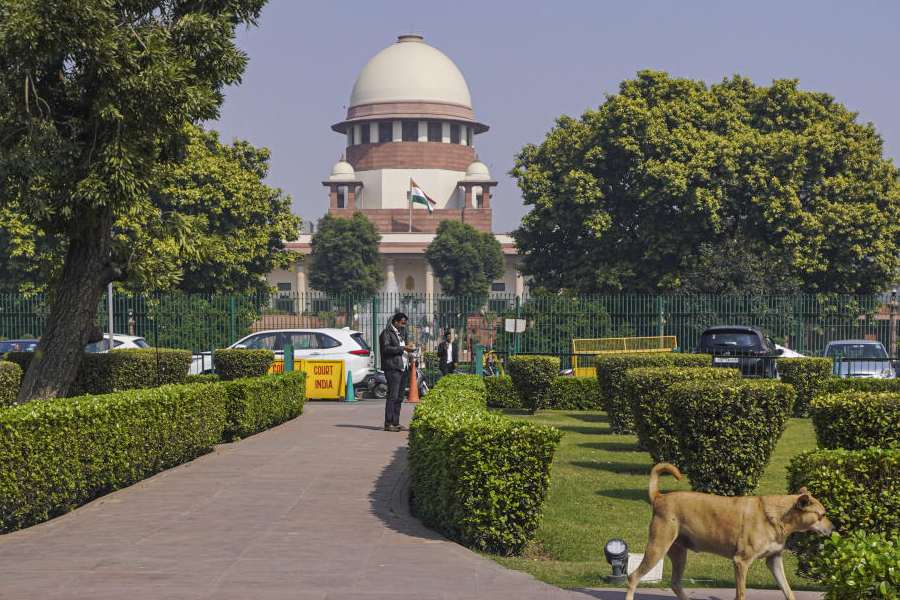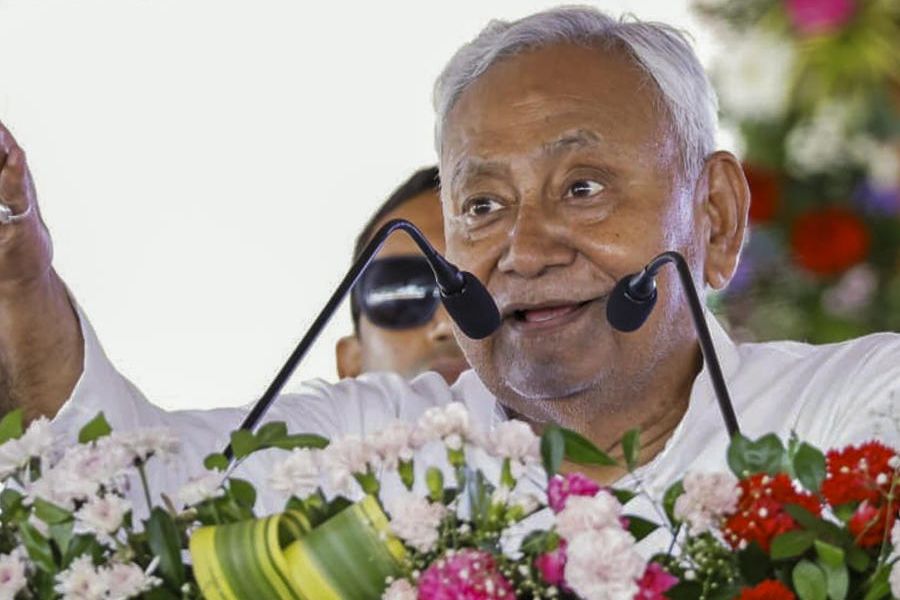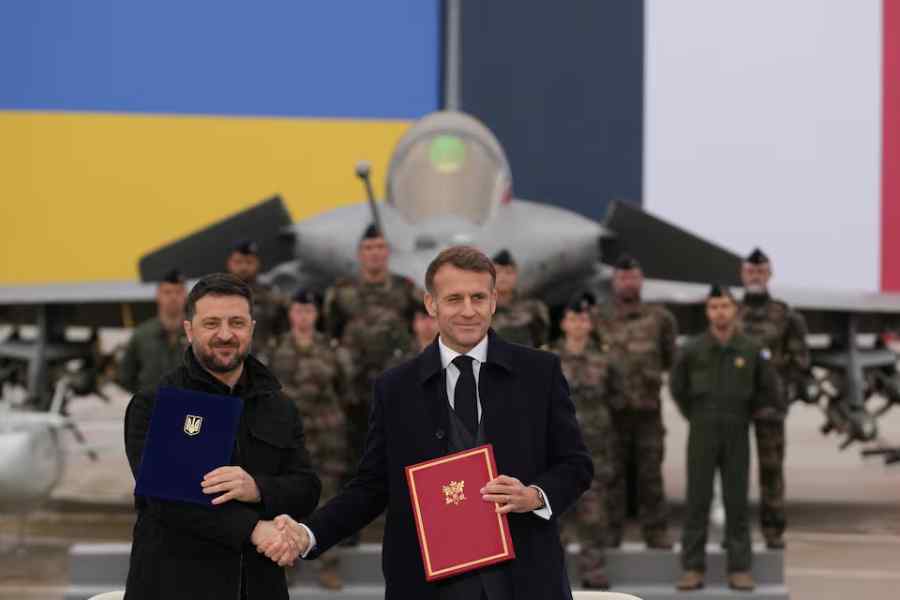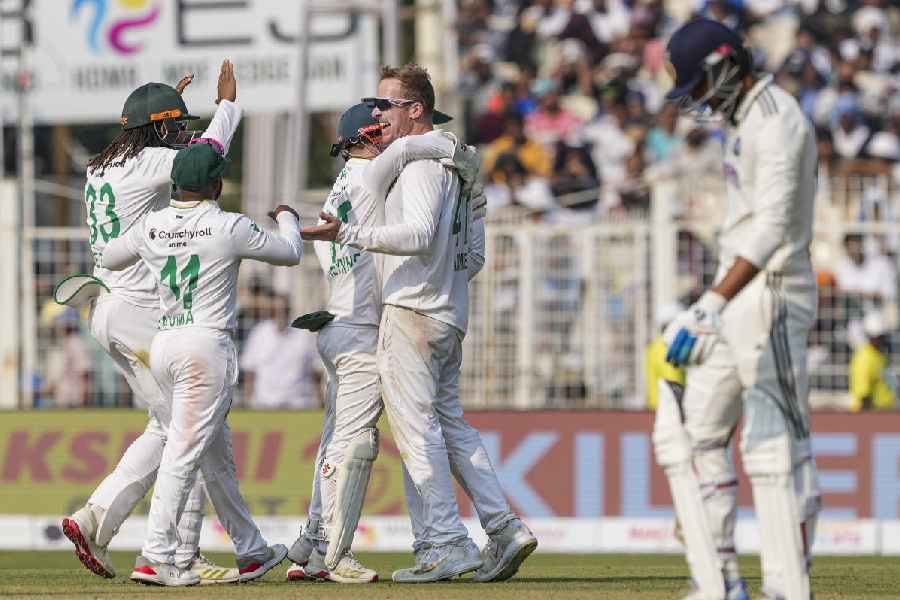 |
| FROZEN MOMENTS: Ski traversing on Mt Mckinley. Photo: Chewang Motup Goba |
When we did the first ski traverse of the Siachen glacier in 1986, we spent nearly a month on skis. The entire expedition, which took about two-and-a-half months, also saw us accomplish an ascent of Sia Kangri I (24,350 ft). Perhaps, for the first time in the history of mountaineering, the summiteers carried machine guns because of heavy shelling by the Pakistanis!
It was an Indo-American venture, with a team of seven Indian Armymen and an equal number of Americans. The Indian leader was Major K.V. Cherian who was also the overall leader, while the American leader was the famous mountaineer, Leo LeBon. Along with the British climber, Col J..M. Roberts, he had started planning for the trek in the Himalayas way back in 1969.
My role was to guide them. In 1985, when K.I. Kumar slipped to death on Everest, I was involved in retrieving the body. The next year, his elder brother, mountaineer-skier Col Narender Kumar (whose adventure travel company, Mercury Himalayan Explorations, was handling the expedition logistics), invited me to guide the Siachen ski traverse.
We tackled all sorts of unusual hurdles. Before the team set out from Leh on June 9, we had trouble finding porters. The locals had no idea how to carry loads on their backs because they were used to loading everything on animals. I recruited 15 college boys in Leh to work as porters. At Panamik village in Nubra, the headman helped us by forcing the young men to join the expedition as porters. They did not arrive at Siachen Base Camp on schedule. So the team spent an extra day there because I had to return to Panamik to get the porters.
The drive to Siachen Base Camp (12,170 ft) from Leh took two days with a night halt at Panamik. Finally, at 5 am on June 13, we began the walk across the glacier. We did not use skis till Camp II (14,000 ft) because the terrain consisted of moraine. In those days, the snow started a little above base camp. Now, there is no snow up to Camp III (15,000 ft) because the glacier has undergone changes owing to climatic conditions. We got considerable help from the Armymen in Siachen, though they had little infrastructure facilities then, and lived in tents. A support team from 3 Vikas ? a Tibetan force ? joined us from Base Camp. The porters turned back from Camp II and we began to use skis, sleds and snow mobiles (which were then new arrivals in Siachen).
The glacier is 72 km long and the ascent is gradual but the going was tiring because of the snow, which made skiing and dragging sleds difficult. It would get very hot on the glacier in the day and the snow underfoot would turn to slush. We wore skins on our skis to prevent backward sliding and this made movement on slushy snow more difficult. We would cover about 14-18 km a day.
Our night halts would be at the Army camps. Camp III was below Sia La (18,700 ft), from where we could see the Pakistani Army position on the Baltoro glacier. The biggest camp was Camp IV (16,000 ft) or Kumar Camp (it’s named after Col Kumar), which is at the junction of the Teram, Bilafond La and Siachen glaciers. In Bilafond La, we had to run out of our tents every morning when Army supplies were air dropped. It was dangerous to stay inside because one could get crushed. Two snow mobiles were crushed by freefalling loads because the parachutes malfunctioned. Bilafond La was also where we faced maximum shelling. We would hear the sound of a gun going off and a few seconds later, a shell would land a few hundred yards away. Fortunately, the shelling took place only during the day.
But when we reached Camp V (17,500 ft), the shelling intensified and we spent two nights there. We skied nearby and climbed a small six-thousander. It was then decided that it was too risky for the Americans to attempt Sia Kangri. So the team split. The Indians went to Sia Kangri I while the Americans and I completed the ski traverse.
We set up Camp VI (18,000 ft) at the base of a small black peak and made forays to the extreme points of the glacier ? Indira Col (18,898 ft) and Turkestan La East (19,210 ft). At Indira Col, we hunted for an ice axe the late Indira Gandhi had presented to Col Kumar, which he had planted there. Two Americans went with me. The Americans became the first westerners to travel the Siachen glacier from snout to head and we were the first civilians to go to Indira Col after the famous American couple, Bullock Workman and Dr Hunter Workman, explored the area in 1911-12.
As told to Yana Banerjee-Bey

